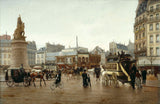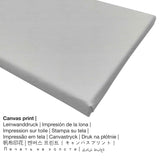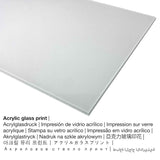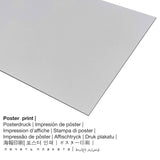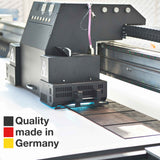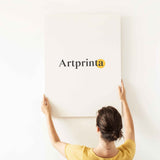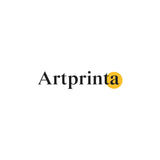Edmond Grandjean, 1896 - Ebe Clichy, na 1896 - ọmarịcha nka
Ụtụ gụnyere. Mbupu gbakọrọ na ndenye ọpụpụ.
The 19th narị afọ ọrụ nka Place Clichy, in 1896 e mere site nna ukwu Edmond Grandjean in 1896. The beyond 120 years old original was painted with the size: Height: 86 cm, Width: 130,5 cm and was made with the techinque of Agba mmanụ. Date and signature - On the front of the canvas, signed and dated lower right "E. Grandjean / 1896." was the painting's inscription. Nowadays, this work of art belongs to the Ụlọ ihe nkiri Carnavalet Paris digital collection, which is a museum dedicated to the history of the city Paris. We are delighted to mention that this artpiece, which is part of the ngalaba ọha a na-agụnye na nkwanye ùgwù nke Ụlọ ihe nkiri Carnavalet Paris.Kridi n'obi nke artpiece bụ ndị a: . Kedu ihe ọzọ, nhazi ahụ dị na odida obodo format na akụkụ akụkụ nke 3: 2, nke pụtara na ogologo ya dị 50% ogologo karịa obosara.
Ozi nkowa mgbakwunye on the original artwork by the museum (© nwebiisinka - Musée Carnavalet Paris - Ụlọ ihe nkiri Carnavalet Paris)
Place de Clichy, 17th and 18th district. Urban landscape. On the left the monument to Marshal Moncey. Basically, the outlet of the Avenue de Clichy, and right on Boulevard de Clichy. Several carriages and two bus circulating on the site along with a woman velocipede. Many passersby.
Opened in 1789 and extended in 1864, Place de Clichy is the crossroads of four arrondissements. In the center is the monument to the glory of Marshal Moncey to commemorate the day of 30 March 1814, performed by the statue Doublemard brothers. The table was featured in the living room of the French Artists Society, 1896, 941.
Iberibe ozi ndabere nka
| Aha nka nka: | "Place Clichy, in 1896" |
| Nhazi nka: | sere |
| Category: | nkà nke oge a |
| oge: | 19th narị afọ |
| Emepụtara n'afọ: | 1896 |
| Afọ nka: | ihe karịrị 120 afọ |
| Usoro nka izizi: | Agba mmanụ |
| Akụkụ nke ihe osise izizi: | Ogologo: 86 cm, obosara: 130,5 cm |
| Ederede nka nka izizi: | Date and signature - On the front of the canvas, signed and dated lower right "E. Grandjean / 1896." |
| Egosiputara na: | Ụlọ ihe nkiri Carnavalet Paris |
| Ebe ngosi nka: | Paris, France |
| Weebụsaịtị ihe ngosi nka: | Ụlọ ihe nkiri Carnavalet Paris |
| Ikikere nke ihe osise: | ngalaba ọha |
| Site n'aka: | Ụlọ ihe nkiri Carnavalet Paris |
Banyere onye na-ese ihe
| aha: | Edmond Grandjean |
| Ọrụ onye na-ese ihe: | onye na-ese ihe |
| Nhazi nke onye nka: | omenkà nke oge a |
| Ndụ: | 64 afọ |
| Afọ ọmụmụ: | 1844 |
| Afọ ọnwụ: | 1908 |
Họrọ ihe dị iche iche ihe onwunwe gị
Na dropdown nhọrọ ziri ezi na-esote isiokwu ị nwere ike họrọ gị mmasị ihe na size. Nhọrọ ndị a dị maka n'otu n'otu:
- Mpempe akwụkwọ ederede (akwa akwa akwa): The poster print is a UV printed flat canvas with a fine surface structure, which reminds the original version of the work of art. Please bear in mind, that depending on the absolute size of the poster print we add a white margin of something between 2-6cm round about the artwork to facilitate the framing with a custom frame.
- Mbipụta nke aluminom: Aluminium Dibond prints are prints on metal with a true depth - for a modern look and a non-reflective surface structure. The colors are luminous and bright in the highest definition, details appear crisp and clear, and there’s a matte look you can literally feel.
- Glass acrylic e biri ebi (nwere ezigbo mkpuchi iko): A glossy acrylic glass print, often denoted as a an art print on plexiglass, will convert an artwork into marvellous décor and is a distinct alternative option to canvas and dibond fine art replicas.
- Mbipụta kwaaji: A canvas direct print is a printed cotton canvas mounted on a wood stretcher. Furthermore, a canvas print generates a nice and comfy look. Canvas prints are relatively low in weight, which means that it is quite simple to hang up the Canvas print without additional wall-mounts. That is why, canvas prints are suitable for all kinds of walls.
Nkọwapụta ngwaahịa
| Ụdị edemede: | ọrụ mgbidi |
| Usoro mmeputakwa: | dijitalụ mmeputakwa |
| Usoro mmepụta: | UV kpọmkwem obibi |
| Nlụpụta: | German mere |
| Ụdị ngwaahịa: | na mmepụta ihe |
| Ngwaahịa were: | ihe ndozi mgbidi, nka mgbidi |
| Nhazi nke ihe nka: | nhazi odida obodo |
| Njikwa oyiyi: | 3: 2 |
| Ntụgharị nkọwa akụkụ: | ogologo bụ 50% ogologo karịa obosara |
| Ụdị dị iche iche dị: | ígwè ebipụta (aluminium dibond), acrylic glass print (nwere ezigbo mkpuchi iko), mbipụta akwa akwa, mbipụta akwụkwọ mmado (akwụkwọ kwaaji) |
| Mbipụta kanvas (akwa akwa na etiti ihe ndọtị) dị iche iche: | 30x20cm - 12x8", 60x40cm - 24x16", 90x60cm - 35x24", 120x80cm - 47x31", 150x100cm - 59x39" |
| Mbipụta iko acrylic (nwere ezigbo mkpuchi iko) dị iche iche: | 30x20cm - 12x8", 60x40cm - 24x16", 90x60cm - 35x24", 120x80cm - 47x31", 150x100cm - 59x39" |
| Nhọrọ nke mbipụta akwụkwọ mmado (akwụkwọ kwaaji): | 60x40cm - 24x16", 90x60cm - 35x24", 120x80cm - 47x31" |
| Mbipụta nke aluminom: | 30x20cm - 12x8", 60x40cm - 24x16", 90x60cm - 35x24", 120x80cm - 47x31" |
| Nhazi mmeputa nka nka: | adịghị |
Nkwupụta iwu: We try in order to describe our art products as accurate as possible and to demonstrate them visually on the different product detail pages. Still, the pigments of the print products, as well as the printing may diverge to a certain extent from the presentation on your screen. Depending on the settings of your screen and the condition of the surface, not all colors can be printed 100% realistically. Bearing in mind that all fine art prints are printed and processed manually, there might as well be minor differences in the exact position and the size of the motif.
© Nchekwa ikike nwebisiinka - www.artprinta.com (Artprinta)

